Varicose veins is a disease characterized by a change in the condition of the veins in the legs with impaired blood flow. When the shape is neglected, the veins bulge, which leads to swelling and soreness of the limbs (under load), as well as to aesthetic discomfort. At this stage, surgical removal of damaged veins is effective.
Indications for surgery for varicose veins
Varicose vein surgery can only be reported if there are indications for vascular removal:
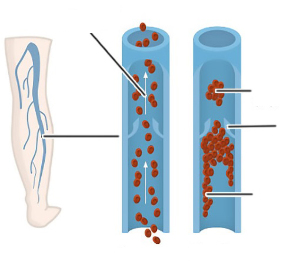
- varicose changes affected most of the vein;
- severe pain and swelling of the legs during physical exertion, which interferes with normal life;
- creation of open wounds and ulcers in the background of disease development. It is dangerous to attach a secondary infection;
- violation of blood permeability, often accompanied by convulsions;
- pronounced development of vascular necrosis;
- pathological changes in the veins, accompanied by their expansion and protrusion. The change is dangerous with trauma to the blood vessels, and also causes aesthetic discomfort;
- blood clots in the veins.
Surgical intervention is allowed only in advanced forms of varicose veins and in the absence of dynamics with conservative treatment.
Absolute and relative contraindications for surgical intervention
Surgery to remove veins on the legs due to varicose veins is performed not only if there are indications, but also in the absence of contraindications:
| Absolute operating bans | List of relative prohibitions |
| Stably high blood pressure | Presence of infectious diseases |
| Regular blood pressure spikes | Dermatological pathologies affecting the skin of the feet |
| Chronic heart disease | Inflammatory processes in the body, including blood vessels |
| Advanced age after 70 | Recovery period after other surgical interventions |
| Presence of cancer | Chemotherapy |
| Diabetes mellitus and severe asthma | Severe soft tissue injury from trauma |
| Thinning and fragility of blood vessels | Pathologies of the liver and kidneys in the acute phase |
| Patients with limited leg mobility (paralysis) or bedridden patients | Blood clotting disorder or anemia |
| Varicose veins in the last stage | Taking hormones, antibiotics or other heavy medications |
| Presence of complex leg fractures (with damage to blood vessels and nerve endings) | Overweight |
| Allergic reaction to drugs used during surgery | Rejecting the patient from surgery |
When you carry a baby, the condition of the veins in your legs can be broken. More often, the pathology is removed on its own after childbirth. In the presence of contraindications, surgical intervention is dangerous due to the worsening of the patient's condition, and even with a fatal outcome.
Phlebectomy
Phlebectomy is a surgical procedure to remove damaged veins and restore normal blood flow to the deep veins.
Anatomical significance, major vein removal surgery technique
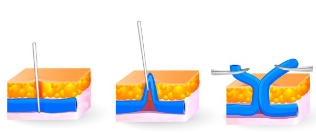
The circulatory system of the legs consists of a deep vein and many branches of the superficial veins that affect the varicose veins. Changes in vascular activity develop due to valve dysfunction. During normal vascular function, the valves are closed, ensuring blood flow in only one direction.
In the veins of varicose veins, the valves do not close, which results in the blood moving in both directions, leading to impaired blood flow, with blood stagnation and bulging veins.
In order to return the blood supply to the extremity, it is necessary to remove the affected vein (with reverse blood flow), ie perform a phlebectomy. Before the operation, the patient undergoes preparations (taking tests, scanning the condition of the veins, determining the general condition of the patient).
If there are no contraindications, specialists perform a surgical intervention consisting of the following stages:
- Access to the affected vessel is provided by a small incision (in the groin or popliteal depending on the position of the vein). The damaged vessel is then ligated from a deep vein to block blood flow.
- An incision was made near the varicose vein. With the use of a probe, the vessel separates from the muscle tissue, lymphatic system and small capillaries. The damaged vein is removed through a tube or a hook.
- Capillaries are treated to prevent bleeding.
- If there are damaged capillaries that form spider veins, they are removed.
- Finally, cosmetic sutures, a disinfectant dressing and an elastic bandage are applied.
The operation is performed under general or local anesthesia. It depends on the size of the vessel and its location.
Efficiency level
Surgical removal of veins is used in different stages of development of varicose veins. The procedure is highly efficient (over 98%). Restoration of blood circulation occurs in a short time.
Rehabilitation
The effectiveness of the procedure depends not only on the qualifications of the surgeon, but also on compliance with the rules in the postoperative period.
After phlebectomy you should:
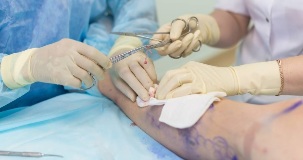
- suturing 7-14 days in the hospital;
- wearing compression stockings or elastic bandages for 30 days is performed day and night;
- after 30 days, 3 more months, wearing specialized underwear per day
- water foot washing procedures (where surgery was performed) are only possible after suture removal;
- saunas, baths and hot tubs are prohibited during the recovery period;
- Post-surgery painkillers are prescribed by a doctor. Self-selection is forbidden;
- additional medications are taken to prevent blood clots from forming;
- taking medications to strengthen blood vessel walls (vitamins E and C);
- is forbidden to stay in a standing / sitting position for a long time, wearing high-heeled shoes and tight underwear;
- During the period of rest in the supine position, the legs should be above body level. Promotes the outflow of excess blood and reduces swelling;
- Introduce physical activity to normalize blood flow in a timely and gradual manner (talk to your doctor)
- massages and physiotherapy are performed with the permission of a doctor;
- Rejection of alcohol and nicotine. Alcohol provokes vasodilation, and tobacco, on the contrary, leads to their narrowing. These effects reduce the efficiency of the operation;
- If you are overweight, a low calorie diet is prescribed.
If the rules are followed, a full recovery of the limbs is possible in 6 months.
Endovenous laser coagulation
Laser vein removal surgery for varicose veins is performed when direct veins at least 0. 02 cm in diameter and with a small number of capillaries are affected. The procedure consists in the action of light waves on damaged vessels with their subsequent soldering and destruction.
Equipment
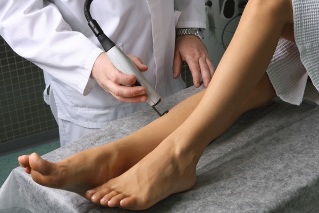
Laser vein coagulation can be performed with any of 3 types of optical fibers:
| Fiber Optic Type | Action Summary |
| End (classic) | This light guide produces air radiation from the end, ie. the vessel is sealed in front of it. The downside is the formation of hematomas and a painful feeling of varicose veins. Maximum vein diameter 0, 1 cm. |
| Radial (with elves painless radial light guide) | Light waves of fibers form a circle that wraps around a vein in diameter. This allows the treatment of veins of any size. It also reduces the risk of hematomas and the development of swelling. |
| Of 3 types of radial fibers | Two light ring lasers are used to remove varicose veins. The first prepares the vein for the procedure (removing excess fluid), the second circle solders the walls. Light guides for fine and short veins and for large vessels are produced for treatment. |
The equipment is chosen not only by the patient, but also by the specialist for the condition of blood vessels.
Which veins can be removed by EVLK method
Before choosing an EVLK by a phlebologist (a specialist who examines veins and removes varicose veins), the characteristics of the damaged blood vessels are determined. They must be flat and at least 2 mm in diameter.
As a result, laser therapy can be applied to the following groups of blood vessels:
- small and large saphenous veins;
- saphenous accessory veins, which are at least 5 mm from the surface of the epidermis;
- vessels that connect deep veins to the superficial.
For other veins, therapy is only possible with phlebectomy.
Efficiency
EVLK vein removal is possible with 3 types of optical fibers. Depending on the type of equipment, the effectiveness of the treatment varies. When the operation is performed with the help of an ultimate light guide, the efficiency of the therapy is 94-96%. Working with radial light guides enables 100% results in removing varicose veins on the legs.
Preparation and implementation phases
When deciding to remove varicose veins with EVLK, the patient should undergo the following training:
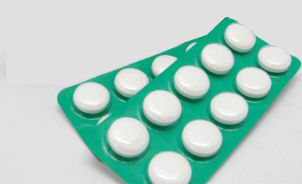
- Cancellation of hormonal drugs (if taken). Because they can cause the development of thrombosis;
- the day before the intervention it is necessary to take blood thinners;
- examination of damaged veins to determine the extent of their damage;
- taking tests to rule out the presence of a hidden infection or inflammatory process in the body. Blood coagulation is also determined;
- the place of the procedure is thoroughly washed and shaved (only antibacterial soap is allowed without the use of cosmetics).
Prior to surgery, the boundaries of the damaged veins, the laser / fiber insertion site, and the capillary branching site are marked. These markings allow you to solder the beginning and end of the vein as well as the capillary outlet. The process is performed under the control of an ultrasound machine.
EVLK is produced in stages:
- Inserting the catheter through a small puncture (the catheter insertion site is anesthetized with local anesthesia) into the marked area. The light guide will move along it.
- Inserting the light guide into the catheter and advancing it to the damaged area. It is performed under ultrasonic control on a monitor.
- Injection of anesthetics to dull veins and adjacent tissues.
- Penetration of the "active" light guide through the damaged vein, followed by a delay in the places where the capillaries branch (to seal the outlet and prevent bleeding).
- Removal of the laser by antiseptic treatment of the puncture site and application of an elastic bandage (or using compression stockings).
Upon completion of the procedure, the patient can leave the hospital immediately.
Rehabilitation characteristics
To restore the work of the injured limb and prevent the development of complications, you need to get acquainted with the nuances of rehabilitation after EVLK.
They are:
- after the procedure, it is recommended to walk the operated leg in a medical institution for an hour;
- 2-3 days, ultrasound control of the treated vein is performed;
- within 5 days it is necessary to wear specialized underwear for 24 hours (the type of socks is discussed with the doctor before the operation). Further, within 45-60 days, clothing must be used during the day;
- Knead your feet daily by walking every day for 60 minutes;
- Avoid overloading your legs (prolonged sitting or standing) and visiting saunas or bathing in hot baths.
If removal of varicose veins is still necessary, procedures may be performed no earlier than 7 days later.
Advantages of each method
Leg vein removal surgery for varicose veins, depending on the type of intervention, has the following advantages:
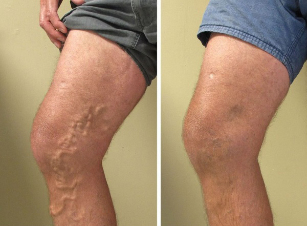
| Phlebectomy | EVLK |
| The incisions for surgery are about 5 mm, so rarely is any scar left | No pain during the procedure (using local anesthesia). General anesthesia is not required |
| Painlessness, because the operation is performed under local anesthesia. Local anesthesia is used for miniphlebectomy. | EVLK is performed under ultrasound control. The result is high precision and efficiency. |
| Low price | Hematomas and pain at the site of surgery are rare or mild. |
| Fast recovery of skin tone (absence of stars and purple-cyanotic shade of the epidermis) | The operation requires 1 stitch, so no stitches or scars are needed |
| Short recovery period of about 30 days | Recovery period up to 5 days |
| Effective for all forms of varicose veins | After surgery, the patient can leave the clinic within 1 hour. |
| Return to normal life is possible in 24 hours. | |
| EVLK can be reported when ulcers compromise the integrity of the epidermis. | |
| The duration of surgery is no longer than 40 minutes. | |
| EVLK can be done on both feet in one day. Another operation on one leg is allowed after 7 days. |
The risk of infection during the procedure is minimal because the incision / puncture is small.
Complications after vein surgery and laser surgery
There is a risk of complications after removal of the vein by surgery or laser. Adverse reactions can occur due to low qualification of the specialist or due to violation of the rules during the rehabilitation period. Possible complications of phlebectomy and endovenous coagulation.
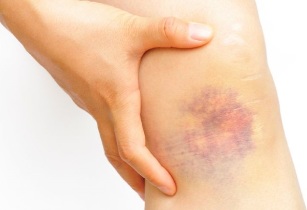
| Vein removal methods | Minor complications due to procedures | Major complications |
| Phlebectomy |
|
|
| Endovenous laser coagulation |
|
|
An allergic reaction to anesthetics may develop during both surgeries.
Complication minimization measures
Surgery to remove veins on the legs with varicose veins is sometimes accompanied by the development of complications, to prevent their occurrence it is necessary to:
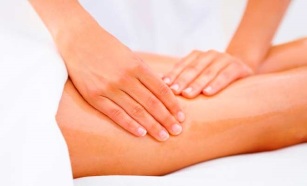
- testing for allergic reactions to the drugs used;
- exclusion of infectious diseases and inflammatory processes in the body before surgery;
- selection of proven clinics with highly qualified specialists and modern equipment;
- adherence to the rules during the recovery period. Special wearing of compression underwear;
- observe the diet during the recovery period (which will be discussed by a specialist after the procedure). The amount of clean water increases in the diet, food intake is done in small meals, the diet is enriched with vitamins and minerals;
- rest your feet during working hours;
- to undergo post-surgery examination to monitor limb recovery dynamics;
- to perform massages and physiotherapy to quickly restore blood flow.
If any deviations that are unacceptable for this operation are found, you must contact the clinic immediately.
Comparison of forecasts
With both methods of removing veins on the legs, the probability of complete recovery is higher than 95%, but provided that the contraindications are removed, the rules are followed during the rehabilitation period and the selected clinic is selected. With surgical treatment, blood flow and the external condition of the legs are restored after 3 months, and with laser therapy, recovery is recorded after 30 days.
In advanced forms, the removal of blood vessels is performed by surgery. The method of treatment is determined not only by the patient's wishes, but also by the presence of indications and contraindications for the procedure. The effectiveness of therapy depends on the qualifications of the doctor and the application of the rules of foot care after surgery.























